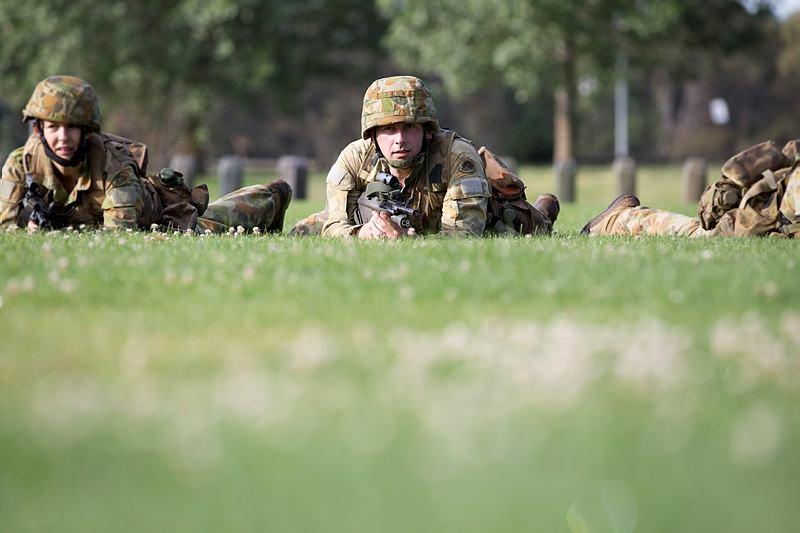Army: hone on the range?
Posted By Peter Jennings on January 9, 2015 @ 06:00
 [1]
[1]John Blaxland concludes his important book, The Australian Army from Whitlam to Howard [2], by setting out key future challenges for the Army:
- ‘… reinvest in skills to enable closer and more effective engagement in Australia’s region’;
- ‘… in addition to grappling with the challenge of ‘amphibiosity’…continue to work on improving ‘soft’ skills—in particular…intelligence, language and cultural awareness capabilities’;
- ‘Manage ‘the haphazard nature of government resourcing’;
- ‘… draw on the diversity, versatility, ingenuity and resolve of the Australian people’; and,
- ‘… hone and refine [Army] skills while incrementally improving capabilities.’
Those are refinements to an entrenched system. Blaxland’s book details Army’s leading role in around 100 foreign and over 50 domestic operations between 1972 and 2007. The tempo has increased with each decade—from 18 operations in the 1970s, to 33 in the 1980s, 50 in the 1990s and 50 in the first eight years of the new century. Given the pace of strategic change is incremental ‘honing’ the right strategy for Army?
Blaxland argues that five key factors underpin Army’s ‘prowess’: the quality of individual training; collective field training; strong regimental corps identities; close ties with allies and regional partners; and ‘a strong sense of Australian national identity linked to the Army’. Those qualities also reinforce a certain conservatism in Army thinking. National icons aren’t to be tinkered with and certainly not by meddling outsiders like ‘those bloody civilians’ (General John Baker, p. 86) or the arbitrary policy constraints of politicians.
A more nuanced picture emerges from the details of Army’s operational experience and doctrinal development. A capacity to improvise—for example, in constantly reshaping roles in Afghanistan—must be considered a strong Australian attribute. Army’s ability to front up to government’s demands, even though those don’t always fit the regimental play-book, has been a source of the politically bipartisan high regard for the Army.
The book faithfully reflects a number of the deep institutional perspectives that have shaped Army thinking on strategy and operations. It’s rare to find a problem that can’t be attributed to civilians. So for example, Operation Morris Dance in 1987 was undermanned because ‘officials in Canberra’ wrongly put caps on numbers when advising politicians (p. 67); in Somalia in the early 1990s, Army was frustrated with problems in establishing headquarters ‘because it was of marginal concern to senior Defence officials’ (p. 110); operations in Bougainville in 1997 were hampered because logistics ‘had been civilianised and had a nine to five work mindset’ (p. 130).
The greatest of these complaints is reserved for the late 1990s Defence Efficiency Review which ‘emasculated the ADF’s logistic support facilities’ (p. 152) and meant that success in Timor emerged only because, as Peter Cosgrove put it, ‘We were lucky and we were good’ (p. 146). While that faithfully reflects a widely-held view in Defence, the sweep of Blaxland’s book makes it clear that the ADF became more competent on operations at the same time as it became more joint and more connected to civilianised logistic support and procurement systems.
The treatment of special forces is an interesting element of the book. Operation Pollard in 1998 saw the deployment of an SAS combat search-and-rescue force to Kuwait. Blaxland acknowledges this was a ‘relatively small but strategically important contribution which enabled the government quickly to demonstrate commitment to the coalition’ enforcing a no-fly zone over Iraq (p. 219). In my view, that deployment was a decisive turning point for John Howard’s approach to Defence. It led to deep Government investment in building up special forces. At times that has been resented by the ‘big Army’. Blaxland charts unhappiness over the large special forces role in Afghanistan, arguably at the expense of the conventional Army, ‘… and because of better funding’ he sharply concludes (p. 344).
One area where Army might usefully invest more thinking time is in policy development. Blaxland describes a number of failed policy initiatives, perhaps most spectacularly one called Army-21 in 1997. An officer involved is quoted as saying ‘The horrors of Army-21…shattered the Army’s morale and crippled its ability to move forward’ (p. 126). At the time I was Chief of Staff to the then-Defence Minister Ian McLachlan and Army-21 offered an early insight for the Howard Government in doing business with Defence. Serious and senior Generals briefed the plan. It quickly became clear that Army saw no role for Government in developing the policy other than to endorse it. Even in Australia, no Army is an island. The Army-21 experience encouraged Howard to strengthen policy oversight by re-establishing the National Security Committee of Cabinet.
At a time of big strategic change, John Blaxland offers us a book that repays careful reading. Governments and Armies are inextricably linked even if—at times—unused to each other’s company. Barring disruptive change, Army’s future will look like its past: a mix of important strengths and a few dogged blind spots.
Peter Jennings [3] is executive director of ASPI. Image courtesy of Department of Defence [4].
Article printed from The Strategist: https://aspistrategist.ru
URL to article: /army-hone-on-the-range/
URLs in this post:
[1] Image: https://aspistrategist.ru/wp-content/uploads/2015/01/20141208adf8547344_068.jpg
[2] The Australian Army from Whitlam to Howard: http://www.bookdepository.com/Australian-Army-from-Whitlam-Howard-John-Blaxland/9781107043657
[3] Peter Jennings: https://www.aspistrategist.ru/about-aspi/aspi-staff/executive/peter-jennings
[4] Department of Defence: http://images.defence.gov.au/20141208adf8547344_068.jpg
Click here to print.